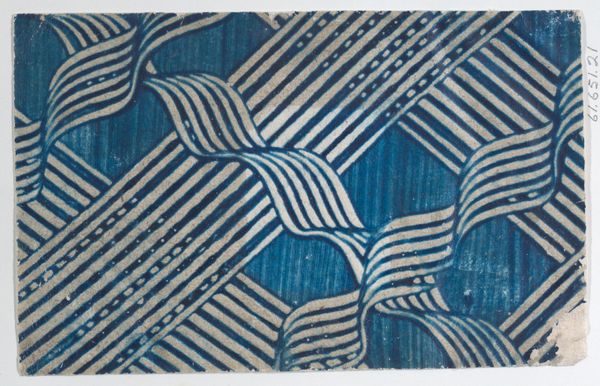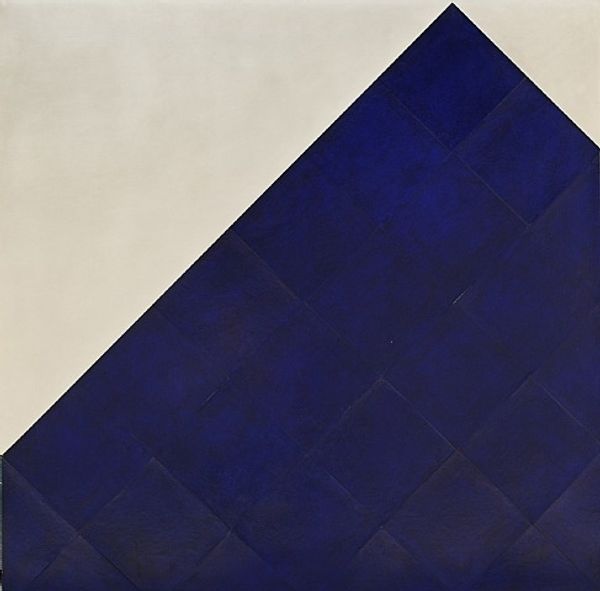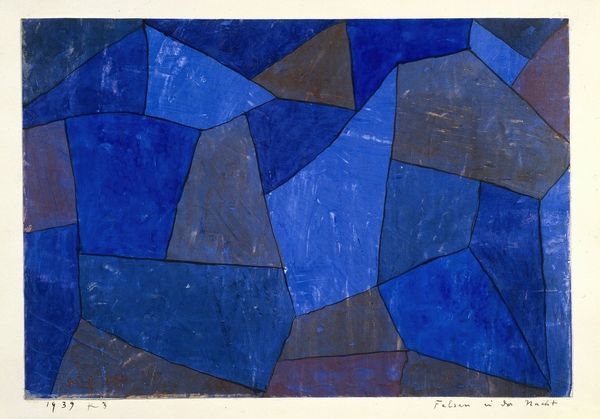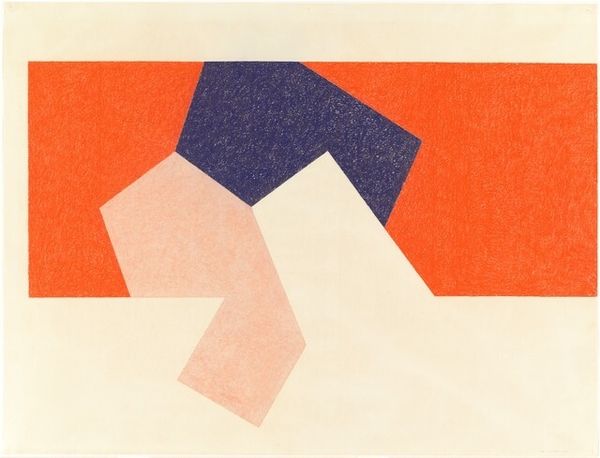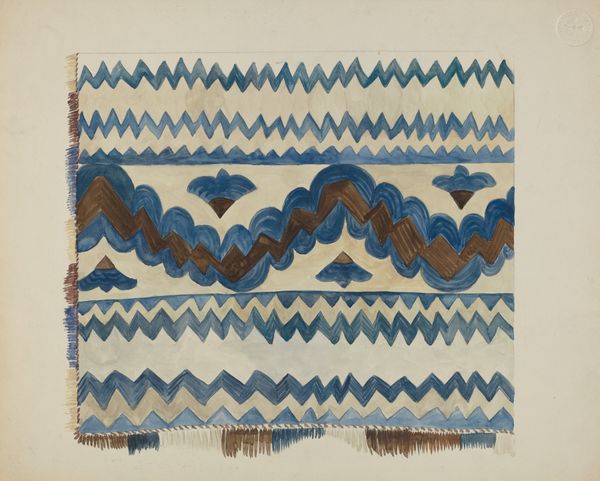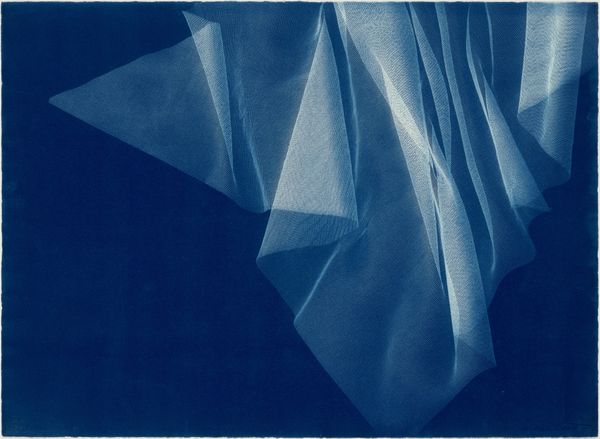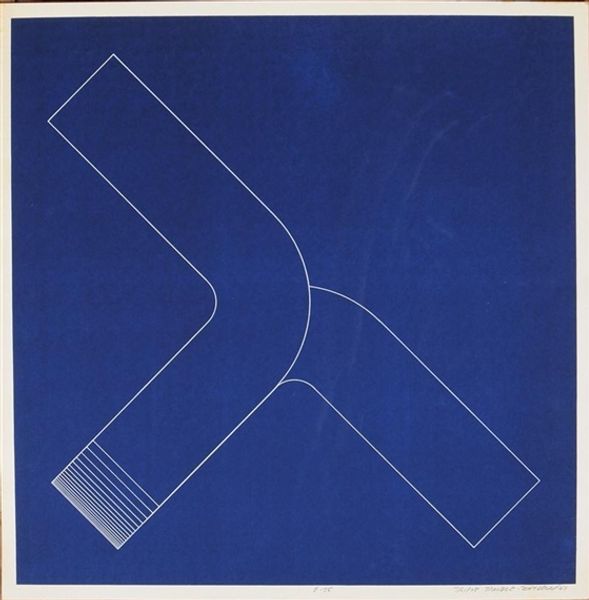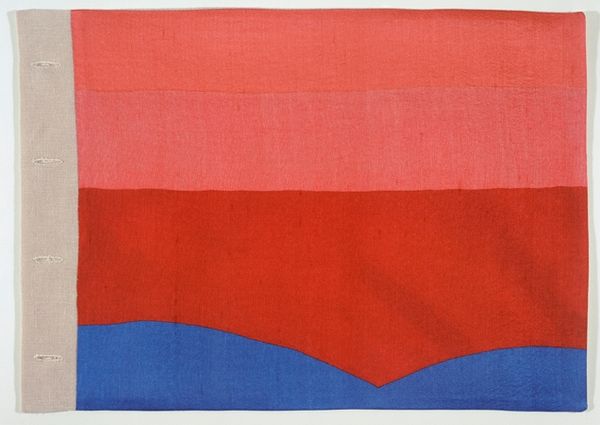
drawing, mixed-media, textile
#
drawing
#
mixed-media
#
water colours
#
landscape
#
textile
#
abstraction
#
modernism
#
watercolor
Copyright: Louise Bourgeois,Fair Use
Curator: Look at this arresting work by Louise Bourgeois from 2007. It's called "Ode to the Bièvre" and combines drawing, mixed media, and textile elements. What’s your initial reaction? Editor: Stark. A bit brooding, actually. All those indigo shapes massed against the grayish-brown field above, like a range of mountains at twilight. The rigid geometry creates a palpable sense of unease. Curator: Mountains can often be stand-ins for stability or grandeur, of course. However, the symbolism Bourgeois employs is multivalent, allowing for multiple interpretations that often lead back to themes around home. Editor: Given that Bièvre is a river, what I initially perceived as "mountains" could represent, instead, repeated rooflines reflected in dark waters? It speaks to the complex urban landscape, a built environment imposing its presence onto nature. Curator: It certainly opens to a symbolic dialogue, even a lament for the loss of the natural, a consequence of industrialization reflected in the image of its presence. These shapes echo recurring images from her childhood connected to the tapestry business that her parents owned. Editor: Tapestries! Now that you mention it, that off-white strip down the left edge with the buttonholes does suggest repurposed fabric, adding another layer to its historical narrative. Did the family’s tapestry business figure into how Bourgeois processed trauma or identity? Curator: Yes. Sewing and mending served as potent metaphors in her broader body of work that served as a method for psychological repair. So, it becomes a commentary on women’s labor. Editor: Indeed. This invites a feminist reading as a tribute to women, water, and textile production, challenging male dominance and honoring feminine space, the private domestic space. This piece pushes back on the modernist tradition! Curator: I agree. The landscape rendered in such raw abstraction, also acts as a meditation, speaking to how the natural world exists as an anchor that holds both memory and emotion. Editor: And through Bourgeois’ lens, this tapestry almost acts as an act of silent protest, a reminder that we can and must hold modernity to account for all its societal consequences. Curator: Precisely, such an engaging mixed-media work—complex in its themes, compelling in its composition, and ultimately hopeful in its gesture of remembrance. Editor: Well, it seems to be an evocative fusion of autobiography, historical witness, and a bold political position. A somber work but a truly resonant one!
Comments
No comments
Be the first to comment and join the conversation on the ultimate creative platform.

